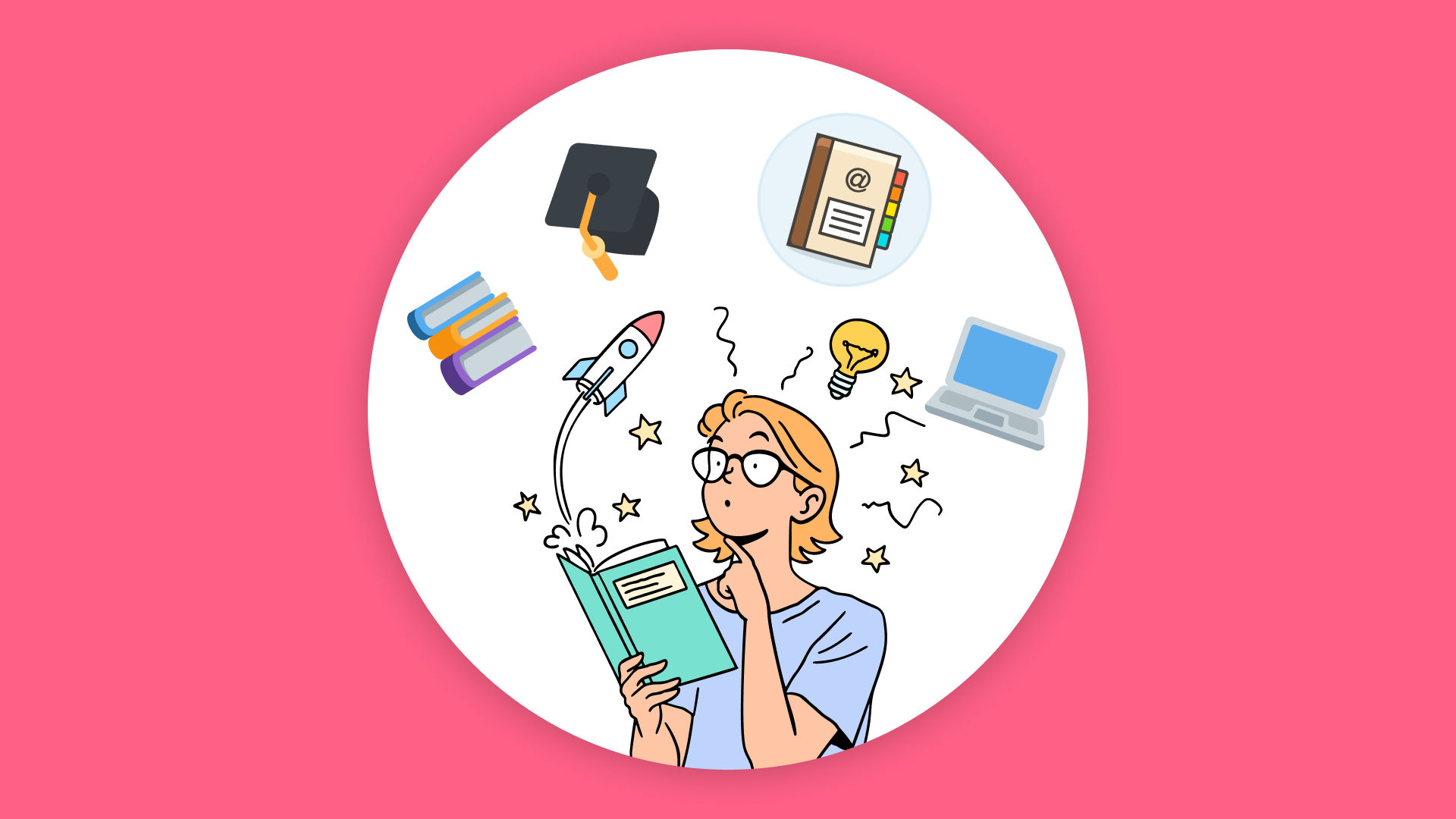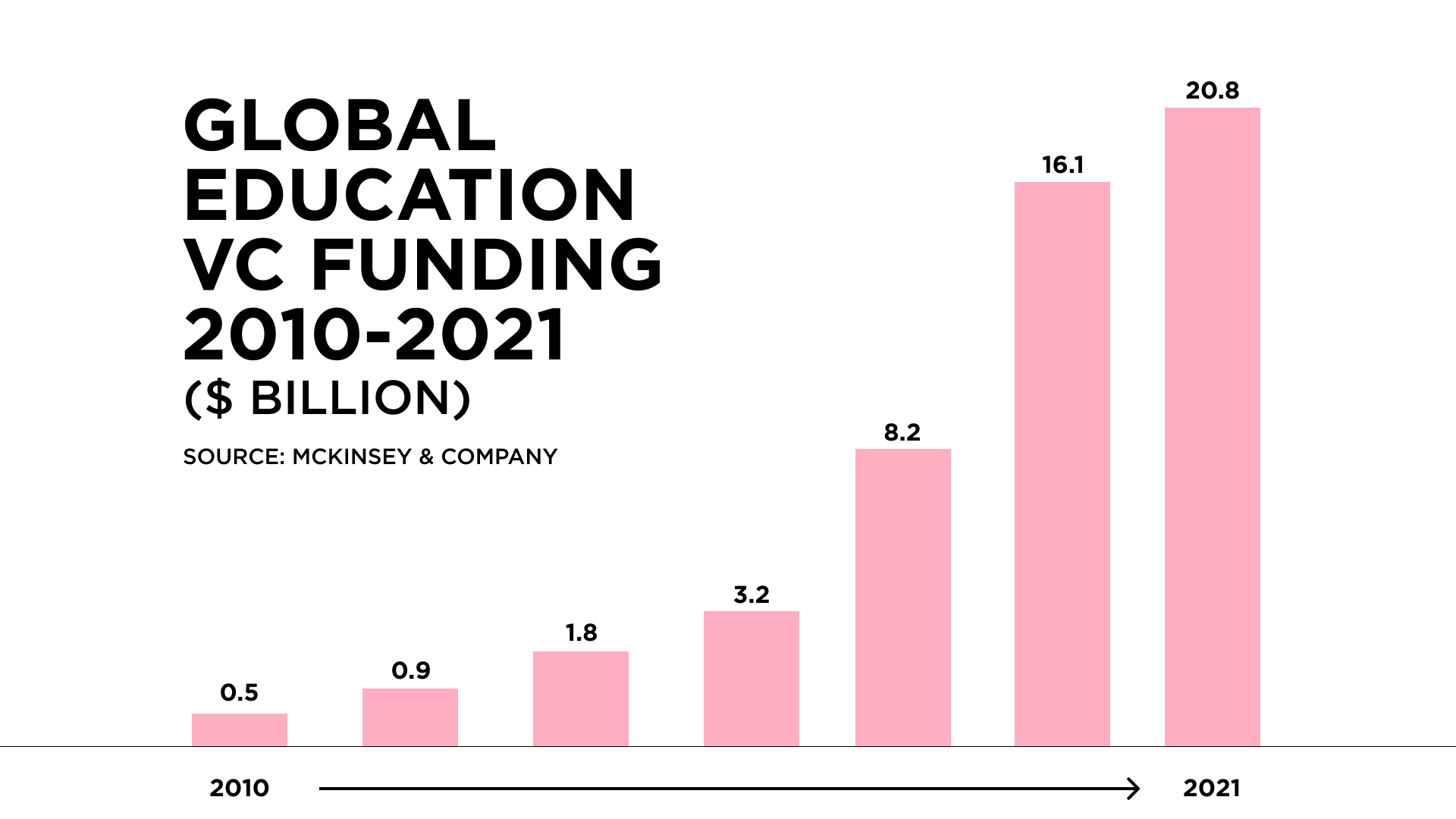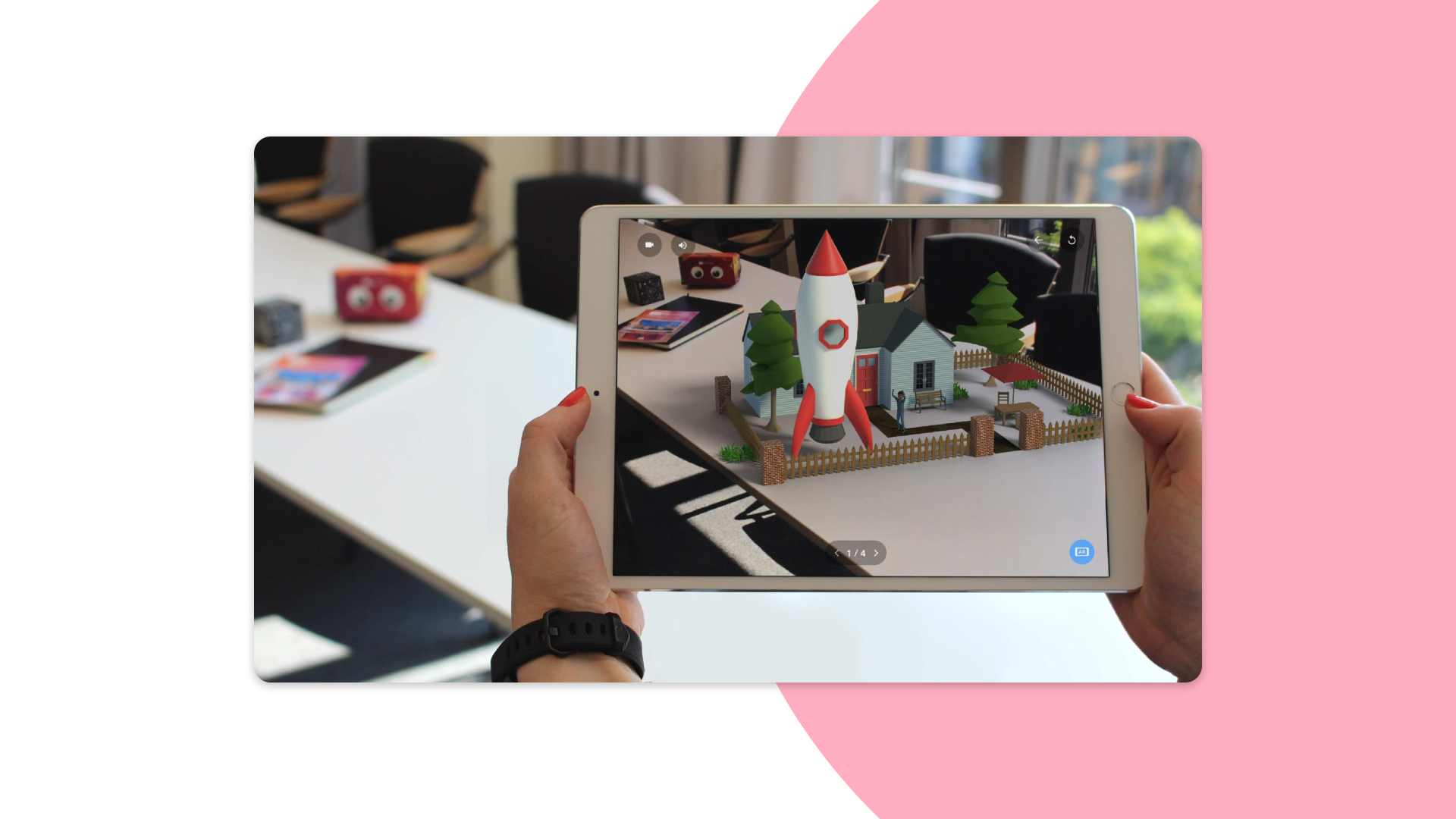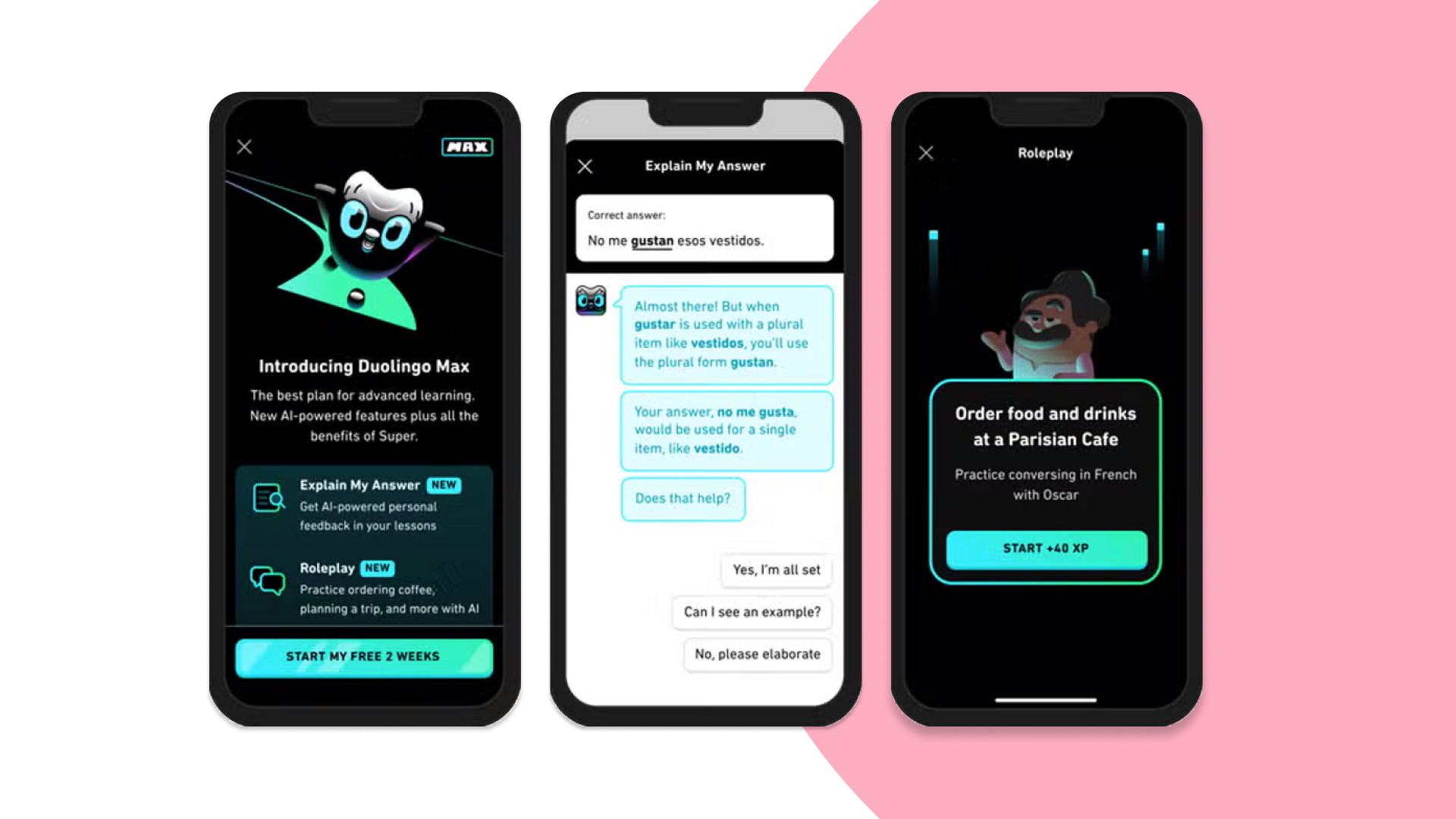EdTech: 5 Trends to Watch in 2024
Coming across the hottest developments in education technology.

EdTech, or education technology, which means the use of digital tools and platforms to enhance learning and teaching experiences, has been growing rapidly in recent years. Of course, the main catalyst for the sphere came in the form of the COVID-19 pandemic, which forced many schools and universities to shift to online or hybrid models of education. However, even with self-isolation rules subsiding, EdTech offers many benefits, including increased accessibility, personalization, and engagement opportunities for learners and educators alike.

Being an innovative area, EdTech is constantly changing, with companies adapting to the needs and preferences of its users, as well as the challenges and opportunities of the world. In 2024, we can expect to see some new and exciting trends emerge in the EdTech industry, as well as some continuations and expansions of existing ones. In this article, we will explore some of the key trends that are likely to shape technology in education in the coming year, and how they will impact the future.
Table of contents:
What is EdTech
EdTech, short for Education Technology, refers to the integration of digital tools and applications into the learning and teaching process to enhance education.This includes a wide range of technologies, including digital resources, educational software, communication platforms, and hardware devices, all geared towards improving the quality of education and making learning more accessible, engaging, and effective. EdTech includes everything from online courses, interactive whiteboards, and digital textbooks to learning management systems, virtual reality, and personalized learning platforms.
Essential EdTech trends to watch
Let’s take a look at some of the most important developments in the sphere of education technology and how some of the EdTech companies ride the wave.
AR/VR for immersive learning
Augmented reality (AR) and virtual reality (VR) are powerful tools used by EdTech to create immersive learning experiences for students of all ages and backgrounds. One of the main advantages of using AR and VR technologies for education is that they can increase the engagement of students. The technologies make studying more fun, interactive, and realistic, which can capture the interest and curiosity of students. For example, CoSpaces Edu is a virtual and augmented reality platform that empowers students to create 3D worlds and explore them in a variety of ways. Adaptable to any subject and grade level, the platform fosters creativity, collaboration, and learning skills.

Also, AR and VR-powered EdTech solutions make learning more accessible for students who face physical, social, or economic barriers. For example, students can use them to access information in their preferred language, overcome their disabilities, or connect with other learners and teachers.
Despite the many benefits of using AR and VR, some challenges need to be addressed. First, these education technologies require expensive hardware and software, such as headsets, controllers, sensors, and applications, which can be prohibitive for many schools and students. Secondly, these EdTech technologies depend on high-speed internet, battery life, and compatibility, which can be affected by various factors, such as location, weather, and updates. AR and VR require teachers to have the skills and knowledge to use the technology effectively, such as designing, implementing, and evaluating the effectiveness of the activities.
The metaverse classroom
A metaverse classroom is one of the types of educational technology based on the concept of a shared virtual space that connects different digital worlds and platforms. By combining elements of virtual reality (VR), augmented reality (AR), and other cutting-edge technologies, such a virtual environment can create immersive and interactive learning experiences for students.
Entering the metaverse with a virtual classroom can bring numerous advantages, fostering a dynamic and captivating learning space. Nonetheless, it's crucial to carefully consider the possible strengths and weaknesses, and approach your virtual learning design with a well-rounded viewpoint. The sustainability of a metaverse classroom as a long-term solution is subjective, and akin to other aspects of eLearning, its success is heavily influenced by your implementation strategies and the technological tools you choose to utilize.
AI-powered personalized learning
Artificial intelligence (AI) is revolutionizing education. AI analyzes vast amounts of data about each student's performance, preferences, and learning behaviors to identify patterns and trends. This data can be used to personalize learning in a variety of ways, such as adjusting the difficulty of learning materials, providing targeted feedback, recommending personalized learning paths, and adapting the pace of instruction. All of this can be highly beneficial for improving engagement and motivation, as well as reducing learning gaps.

For example, Duolingo Max, a new paid subscription tier for the language learning app Duolingo, has recently introduced two new AI-powered features: Roleplay and Explain My Answer. Roleplay allows users to practice their second language in a conversational manner with an AI chatbot powered by GPT-4, while Explain My Answer provides detailed explanations for why a given answer is correct or incorrect. Both features are currently only available to English speakers learning French or Spanish on the iOS version of Duolingo.
Blockchain for secure education
Blockchain is a technology that enables the storage and transfer of data in a decentralized, distributed, and immutable way. It can be used for various purposes, such as financial transactions, supply chain management, digital identity, and more. One of the potential applications of blockchain is in the field of education, where it can provide a secure and transparent way of managing and verifying educational records and abilities.
- Enhanced security: blockchain can safeguard academic credentials, reducing the risk of fraud and manipulation.
- Improved recognition: It facilitates the sharing and recognition of educational achievements across institutions and borders.
- Empowering students: It supports personalized and lifelong learning by giving students greater control over their educational records and portfolios.
- Higher quality of education: Teachers and mentors can use blockchain to track and assess student progress, providing timely feedback securely.
Lifelong learning more accessible
EdTech is revolutionizing the way we learn, making lifelong learning more accessible, effective, and enjoyable. EdTech is erasing traditional geographical constraints and granting global access to top-tier education through digital courses, e-textbooks, and virtual classrooms. This shift has particularly empowered those in remote areas to pursue advanced education and skill development. Additionally, EdTech has introduced flexible learning options, catering to diverse preferences and schedules, with personalized approaches that adapt to individual learning styles, ultimately helping learners surmount obstacles and reach their full potential.
Summing things up
As technology continues to advance, EdTech is set to play an undoubtedly essential and transformative role in the future of education. By leveraging data analytics, artificial intelligence, and personalized learning platforms, EdTech has the potential to enhance accessibility, improve learning outcomes, and equip students with the skills they need to thrive in the 21st-century economy.
However, it is crucial to address the challenges associated with it, such as digital literacy gaps, data privacy concerns, and ethical considerations. By fostering collaboration among EdTech companies, educational institutions, governments, and other stakeholders, we can ensure that EdTech is implemented safely, responsibly, and equitably, maximizing its benefits for learners of all ages and backgrounds.

Subscribe to Umnico news!
Be the first to get recommendations and up-to-date information
